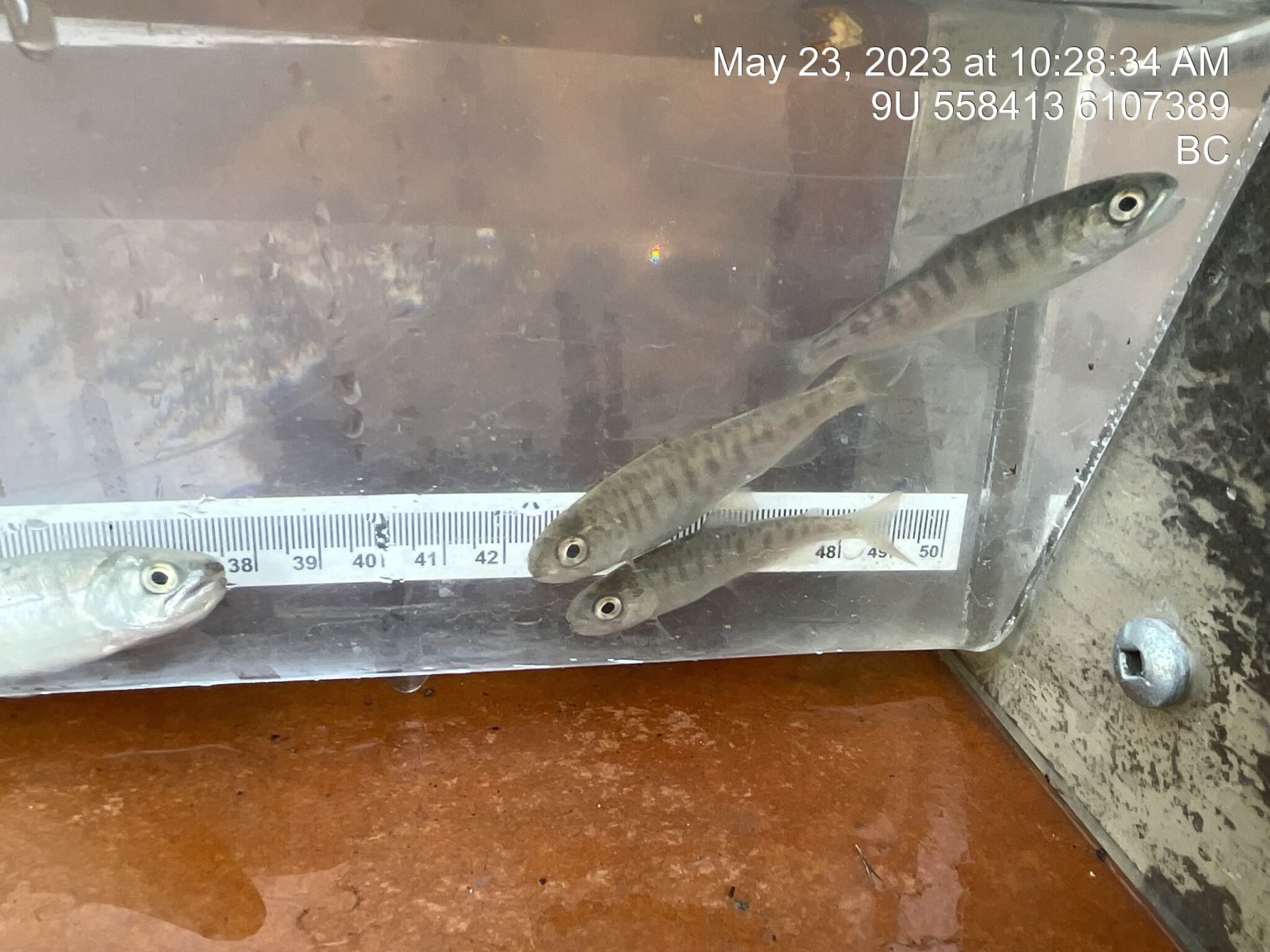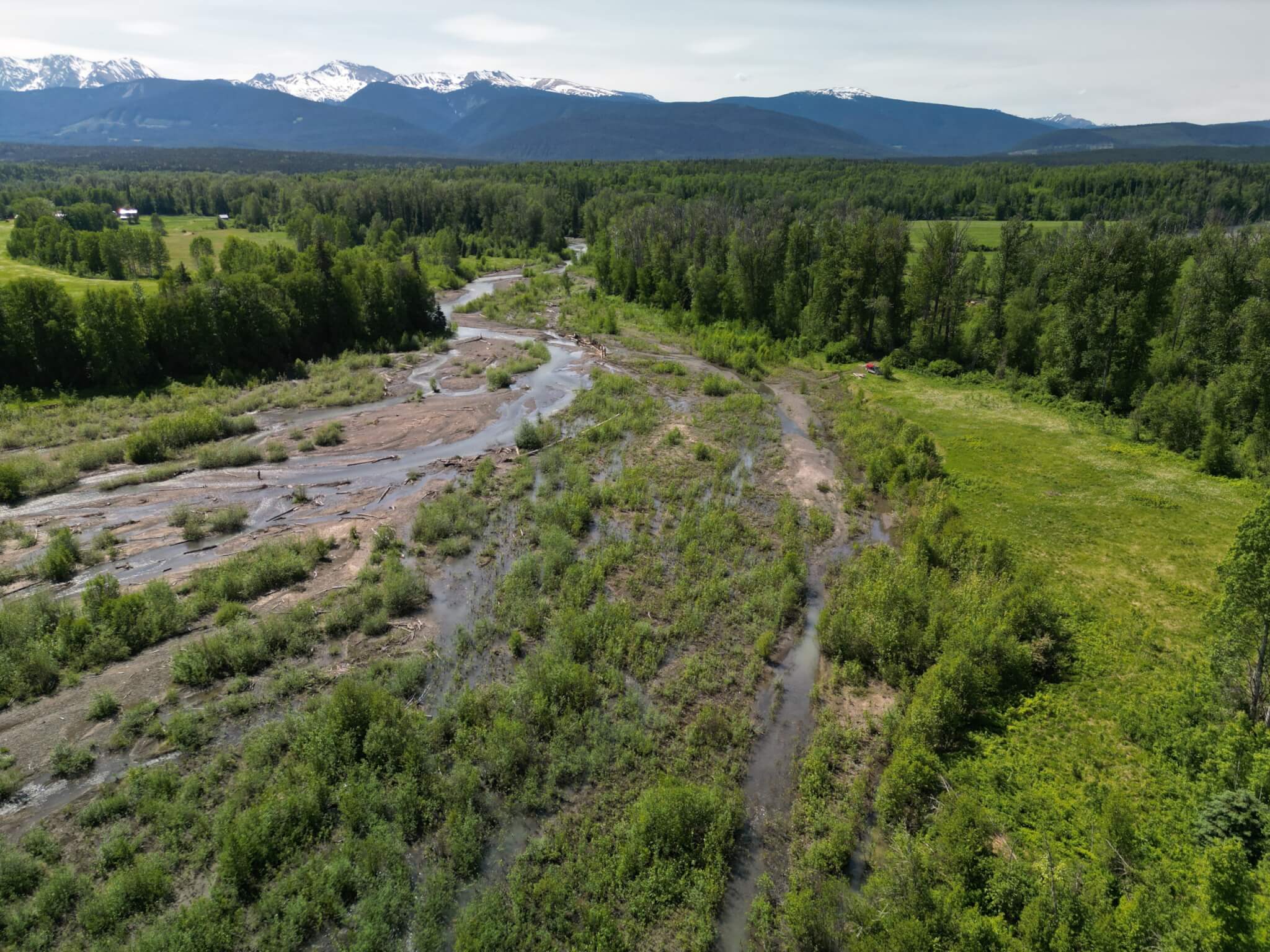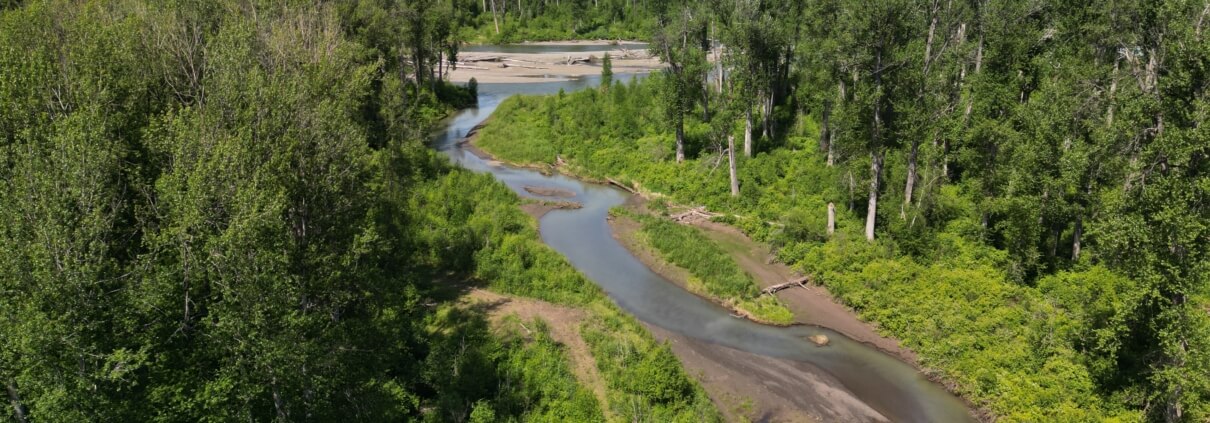Emergency funding to protect salmon after spring floods in the Skeena Watershed
The Pacific Salmon Foundation has provided $23,700 in funding to support three time-sensitive habitat rehabilitation, fish salvage, and infrastructure repair projects in response to recent flood events across B.C.
Unseasonably warm weather in mid-May led to accelerated snowmelt and runoff, causing increased stream flows, fast-flowing rivers, and unstable banks. Extreme floods can jeopardize the survival of juvenile salmon, many of which are currently completing their outmigration to the ocean.
The Provincial River Forecast Centre enacted more than 10 Flood Watches in B.C. in May, including the Skeena Region, which encompasses the Skeena River, Bulkley River, and surrounding tributaries — vital wild Pacific salmon habitat.
Since the flooding, the Pacific Salmon Foundation (PSF) provided immediate support from an Emergency Fund to the Gitanyow Fisheries Authority and Gitksan Watershed Authorities, enabling crews to assess the impacted ecosystems and act swiftly to respond to damage to salmon and their habitats. The projects took place in the Lower Kitwanga River, McCully Creek, and the Nangeese River.
The PSF Emergency Fund is available to assist First Nations- and community-led efforts to save Pacific salmon and activate habitat restoration and remediation work in the face of extreme climate events, such as floods, fires, and droughts.
“Protecting and restoring valuable salmon habitat in rivers and streams during extreme climate events is a top priority for the Pacific Salmon Foundation. Through our Emergency Fund, we have provided immediate support to communities impacted by recent heat-induced floods,” says Michael Meneer, the CEO and president of the Pacific Salmon Foundation. “Climate change is one of the greatest threats to Pacific salmon populations in B.C. We hope local communities continue using this Emergency Fund to address urgent salmon rescue and habitat restoration needs.”
Kitwanga River

Chinook and coho juveniles were salvaged. Photo courtesy of Gitanyow Fisheries Authority.
Local biologists determined that flooding in the Lower Kitwanga River in Gitwangak territory had a high potential to strand juvenile sockeye in low-lying areas as the river levels receded. This issue was particularly concerning because juvenile sockeye are actively out-migrating from the system and the flooding risked trapping them.
Over the last two decades, many salmon recovery efforts have been dedicated to rebuilding the Kitwanga sockeye population due to declines in recent years. Timely support was needed to ensure that the flooding did not impede recovery efforts and present additional barriers to juvenile survival.
Thanks to funding from the PSF Emergency Fund and with the support of the Gitwangak, Gitanyow Fisheries Authority mobilized a crew to monitor the problem as the river levels dropped and found that only minimal fish salvage was required. They salvaged and re-located six coho juveniles and one Chinook juvenile into the main river stem.
The crew found that the initial significant flooding subsided relatively quickly and most fish were able to move out of the flooded areas, and no mass fish die-offs were witnessed. Without immediate funds to support the crew on the ground, this assessment would not have been possible.
McCully Creek

McCully Creek drone imagery courtesy of Gitksan Watershed Authorities.
At McCully Creek, a tributary of the Kispiox River, recent flooding washed away a critical habitat restoration structure that is responsible for maintaining fish-friendly flows.
Since 2018, Gitksan Watershed Authorities has monitored hydrology and fish abundance at McCully Creek. Restoration efforts have been a collaborative effort involving First Nations, Fisheries and Oceans Canada, B.C. Ministries, and local experts, and have focused on channelizing the stream to enable sufficient water depth to facilitate fish passage.
The feature that was recently taken out by the flooding was originally built to keep flows directed at a single output point into the Kispiox River. When the flooding washed the structure out, the flow was spread among too many braided channels, leading to insufficient overall depth for fish passage.
Supported by PSF’s Emergency Fund, the structure was rebuilt immediately on June 5 to ensure that the flow could be re-channelized before the water level dropped significantly. This prevented juveniles from becoming stranded in disconnected pools and will also ensure returning adults can migrate up the channel for spawning.
Nangeese River
Gitksan Watershed Authorites maintains a water monitoring station at Nangeese River, another tributary of the Kispiox, to monitor fish populations and stream conditions. Some of the most abundant sockeye and Chinook salmon populations in Gitksan Territories are from the Nangeese River, making it an indicator river for salmon in the watershed and a key location for routine monitoring efforts.
The monitoring station is accessible by a bridge that was washed out and largely decayed by flooding over the past two years. Technicians from Gitksan Watershed Authorities rely on the bridge to consistently monitor fish populations and their habitat conditions.
Funding from the PSF Emergency Fund allowed the bridge to be rebuilt this season, ensuring that valuable salmon and water data collection continue uninterrupted. The climate uncertainties watersheds are increasingly facing only highlight the urgency and importance of monitoring and managing salmon-bearing streams.
Contact PSF at floodresponse@psf.ca regarding time-sensitive fish rescue, habitat repair, and/or water quality monitoring issues related to climate events.



